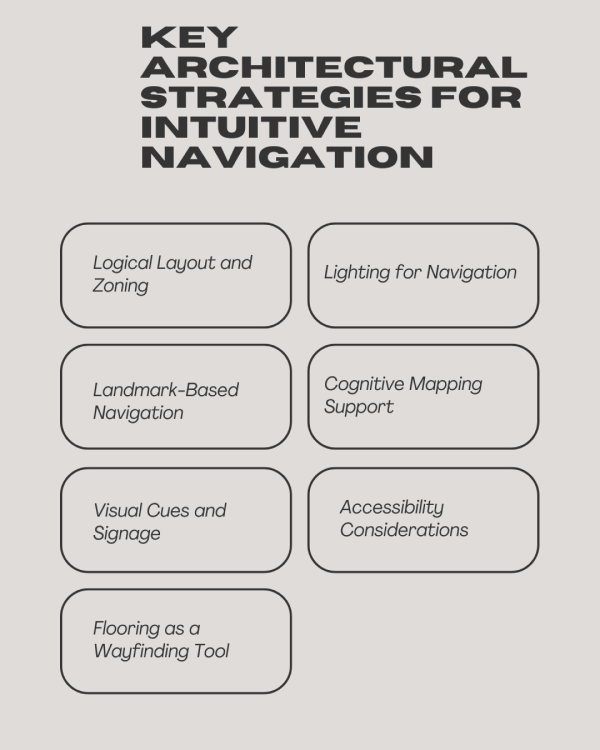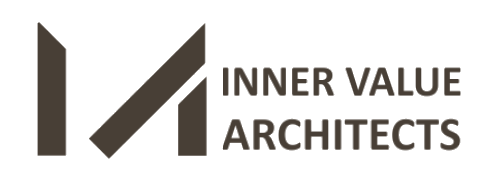In today’s world, we’re all looking for ways to be...
Navigating a bustling hospital can be a daunting experience.Patients and visitors often feel stressed and confused in the maze of corridors and departments in modern hospitals, especially when they’re worried about health concerns. This situation highlights an important but often ignored aspect of healthcare design and i.e is wayfinding. The complexity of modern hospitals, with their many specialized services and advanced technologies, makes navigation challenging. Poor wayfinding causes frustration, missed appointments, delays in care, and more stress for patients. For staff, it means wasted time and lower productivity, which can affect patient care.Hospital wayfinding isn’t just about signs and maps. It involves smart design that combines architecture and psychology to help people navigate complex spaces easily.
Effective wayfinding strategies have the power to transform a potentially bewildering journey into a smooth, stress-free experience, contributing significantly to patient satisfaction and operational efficiency. In this blog post, we delve into the art and science of creating intuitive navigation systems in hospitals. We’ll explore how thoughtful architectural strategies can revolutionize the way people move through and interact with healthcare spaces.
The Importance of Effective Wayfinding in Hospitals
Effective wayfinding in hospitals is crucial for ensuring a smooth and stress-free experience for patients, visitors, and staff. Hospitals are often large, complex environments with multiple departments and specialized areas, which can easily overwhelm those unfamiliar with the layout. When wayfinding is clear and intuitive, it reduces the time and effort required to navigate these spaces, alleviates stress, and improves overall satisfaction. For many visitors, navigating these spaces can be overwhelming, especially when they’re already dealing with health concerns or emotional stress. Effective wayfinding systems can:
- Reduce stress and anxiety for patients and visitors
- Minimize late or missed appointments
- Improve staff efficiency
- Enhance overall patient experience
- Potentially impact health outcomes by ensuring timely care
Key Architectural Strategies for Intuitive Navigation
When it comes to hospital design, effective wayfinding is crucial, and there are several architectural strategies you can adopt to make navigation intuitive and stress-free. Here’s how you can approach it:

1. Logical Layout and Zoning
Start by designing layouts that are simple and easy to follow. For instance, architects should place outpatient services in one area and position high-traffic zones like the emergency department near the main entrance for convenient access. This zoning approach reduces confusion and enhances navigation. To create innovative architecture design with clear pathways that naturally guide people to their destinations and avoid complex intersections that might cause disorientation. By focusing on a logical layout and well-defined zones, you create a hospital environment where patients, visitors, and staff can move through the space efficiently and with greater ease.
2. Landmark-Based Navigation
You can make a big impact by adding distinctive features like unique sculptures, vibrant murals, or striking architectural elements throughout the hospital. These landmarks act as visual reference points that help people orient themselves and remember their way. Position these features in key locations such as main lobbies or near important departments. By using landmarks, you give visitors easy-to-spot cues that simplify navigation and reduce the stress of finding their way in a large and complex environment. This method ensures that navigating the hospital becomes more intuitive and less overwhelming.
3. Visual Cues and Signage
When designing your hospital, consider using color-coded pathways to simplify navigation. By assigning different colors to various departments or floors, you can make it much easier for visitors to find their way. You might use a specific color for the pediatric area, another for the oncology department, and so on. Implement these colors in floor markings, wall accents, or signage to create clear visual cues. This strategy helps architects to create flexible designs that help people quickly identify their destination and makes the hospital environment feel more organized and less confusing. This strategy helps people quickly identify their destination and adds a layer of clarity and order, making the hospital environment more navigable and less stressful.
4. Flooring as a Wayfinding Tool
Consider using flooring as a wayfinding tool in your hospital design. Different flooring materials, patterns, or colors can guide people through the building intuitively. You can use a specific type of tile or carpet to lead visitors from the entrance to the main reception area, and another type to direct them towards critical departments. By changing the flooring at key decision points, you create visual cues that help people know where to turn or continue straight. This approach helps visitors navigate the hospital with ease, reducing confusion and making their journey through the facility more straightforward.
5. Lighting for Navigation
Strategic lighting can guide people intuitively through your hospital design. By incorporating different lighting levels and colors, architects can create clear pathways and highlight important areas. Brighter lighting can illuminate main corridors and critical spaces like reception desks and waiting rooms, while softer lighting can be used in quieter zones. You can also use colored lights to indicate different departments or routes, providing a visual guide that is easy to follow. This approach not only enhances the overall functionality of the space but also supports efficient movement and reduces the likelihood of visitors feeling lost or overwhelmed.
6. Cognitive Mapping Support
To make wayfinding easier, think about supporting cognitive mapping in your hospital design. Help visitors build a mental map of the space by using distinct visual elements. For this, you can use unique color schemes, themed artwork, or standout architectural features to make it easier to remember different areas. Consistent design elements, like similar patterns or materials in certain zones, also help people mentally navigate the space. Adding interactive elements like digital touch screens or info displays can reinforce key landmarks and pathways. And don’t forget about clear, visible landmarks like big, colorful wall panels or easy-to-recognize signage. These tweaks make it simpler for visitors to find their way around and cut down on their stress.
7. Accessibility Considerations
Make sure that your wayfinding system works for everyone, including those with disabilities. Think about incorporating features like braille signage for visually impaired visitors, and ensure that paths are wide and obstacle-free for those using wheelchairs or mobility aids. You should also include audio cues or tactile maps to assist people who might have trouble with visual information. Thoughtful adjustments, will help you ensure that all visitors can navigate the hospital comfortably and independently, making their experience much more positive and inclusive.
The Bottom Line
As you work on improving wayfinding in your hospital, remember that thoughtful design can make a difference in how easily people navigate the space. Each element mentioned in this post plays a crucial role in enhancing the overall experience. By implementing these strategies, you ensure that visitors and patients can move through the hospital with confidence and ease. If you need tailored solutions, consider consulting with Inner Value Architects as they can give you expert guidance. Their experience and expertise in designing intuitive, accessible spaces can help you bring these strategies to life, creating a hospital environment that is not only functional but also welcoming and efficient. Their insights can transform your vision into a reality, ensuring that your hospital serves the needs of all who enter it.










